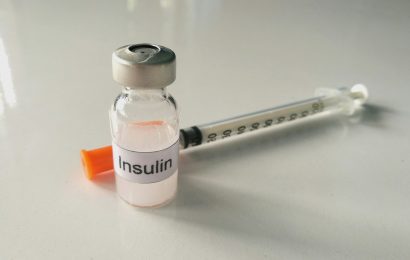Chances are, if you’re reading this, you take (inject) insulin, or you know someone who does. Insulin injections aren’t a whole lot of fun, but then again, they aren’t the end of the world, either. Some people mind them more than others. There are those who have a real fear of any kind of injections, whereas others are more matter-of-fact about injecting themselves.
The reality is that insulin is pretty much the most effective medicine there is to manage blood glucose. That’s because the insulin that you inject into yourself is a replica of what your body would make naturally (if it could, or if it could make enough). Diabetes pills and other injectables can work very well, but over time, they tend to be less effective at controlling blood glucose. That’s because, if you have Type 2 diabetes, the diabetes changes over time. Also, remember that pills aren’t used to manage Type 1 diabetes, so anyone with Type 1 diabetes must inject insulin (via syringe, pen, or pump) in order to survive.
Good News
That being said, insulin injections today, while no piece of cake, are much improved upon compared to days of yore. Remember that insulin was “discovered” back in 1922. Prior to that, there was no treatment for diabetes (Type 1) other than starvation, and people had a 50% chance of surviving two years. So, the discovery of insulin was truly a remarkable event that has enabled people with diabetes to live long, healthy lives (consider the fact that some people are receiving medals for living with diabetes for 75 years!). Insulin syringes of yesteryear were made of glass and the needles were pretty thick (and more painful) compared to today’s needles. Disposable syringes and insulin pens were unheard of.
Today, people who take insulin have a few options for how they want to inject. Syringes are disposable, needles are much thinner and shorter, pens make things easier and more convenient, and for some, insulin pumps are the way to go.
“TITANs” of Injection Guidelines
Injecting insulin isn’t rocket science, yet an imprecise technique can lead to glitches such as how your insulin is absorbed, bruising, or buildup of fatty tissue. Injecting properly means that your insulin will work as it should to help you manage your blood glucose.
Back in 2009, a group of diabetes experts from around the world convened in Greece as part of the Third Injection Technique workshop in AtheNs (TITAN). The group collaborated to develop newer, more specific injection guidelines to enable health-care professionals help their patients be more successful at giving injections. These guidelines address issues such as what sites to use, how to store insulin, how to properly inject, how to use an insulin pen, and how to dispose of sharps. You might be thinking, “What’s new and exciting about that?” but the reality is that prior to this meeting, guidelines were pretty vague and there wasn’t much consensus on some of these issues.
Survey Says…
Survey results are always interesting. You get to find out what other people say, think, and do. As part of the TITAN workshop, 4350 people with both Type 1 and Type 2 diabetes from around the world were asked questions about insulin and injections. Here are some of the highlights of the survey:
• Almost 50% of folks used an 8-millimeter (mm) or 5/16″-length needle
• 21% of people injected into the same site for a whole day or even several days
• Almost half of the people surveyed had symptoms of lipohypertrophy (build up of fatty tissue at the injection site due to repeatedly injecting into the same spot)
• Of the 65% who used NPH insulin, 35% did not mix it before injecting
If you can identify with any of the above, at least you know you’re not alone! Next week, I’ll review some key findings from the new injection guidelines, so stay tuned.




